Open access The genetic prehistory of the Greater Caucasus, by Wang et al. bioRxiv (2018).
The Caucasus Mountains as a prehistoric barrier
I think the essential message we can extract from the paper is that the Caucasus was a long-lasting cultural and genetic barrier, although (obviously) it was not insurmontable.
Our results show that at the time of the eponymous grave mound of Maykop, the North Caucasus piedmont region was genetically connected to the south. Even without direct ancient DNA data from northern Mesopotamia, the new genetic evidence suggests an increased assimilation of Chalcolithic individuals from Iran, Anatolia and Armenia and those of the Eneolithic Caucasus during 6000-4000 calBCE23, and thus likely also intensified cultural connections. Within this sphere of interaction, it is possible that cultural influences and continuous subtle gene flow from the south formed the basis of Maykop.
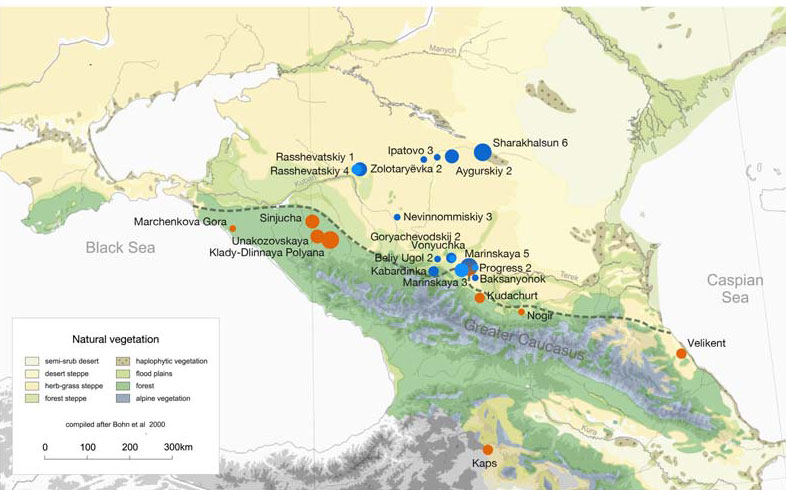
Also, unlike more recent times, the North Caucasian piedmont and foothill of the Caucasus region was more strongly connected to Northern Iran than to the steppe, at least until the Bronze Age.
(…) our data shows that the northern flanks were consistently linked to the Near East and had received multiple streams of gene flow from the south, as seen e.g. during the Maykop, Kura-Araxes and late phase of the North Caucasus culture.
Northern Caucasus dominated by R1b, southern Caucasus by J and G2
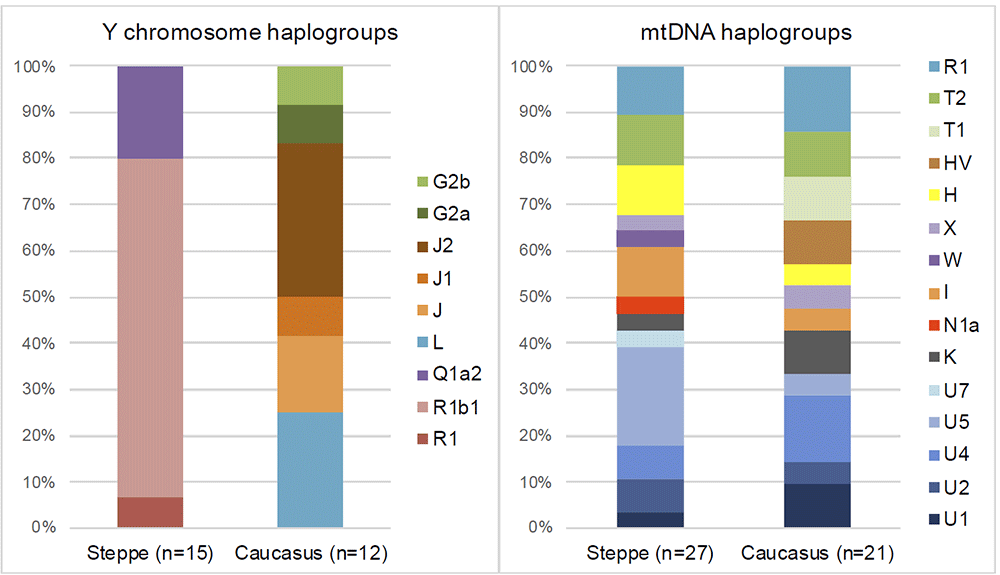
The first samples from the Eneolithic (one ca. 4300 BC?, the other ca. 4100 BC) are R1b1, without further subclades, so it is difficult to say if they were V88. On the PCA, they seem to be an important piece of the early Khvalynsk -> early Yamna transition period, since they cluster closer to (or even among) subsequent Yamna samples.
From 3000 BC onwards, all samples from the Northern Caucasus group of Yamna are R1b-M269, which right now is probably no surprise for anyone.
The Catacomb culture is dominated by R1b-Z2103, which agrees with what we saw in the unclassified Ukraine Eneolithic sample. However, the new samples (clustering close to Yamna, but with slightly ‘to the south’ of it) don’t seem to cluster closely to that first sample, so that one may still remain a real ‘outlier’, showing incoming influence (through exogamy) from the north.
If anyone was still wondering, no R1a in any of the samples, either. This, and the homogeneous R1b-Z2103 community in Catacomb (a culture in an intermediate region between Late Yamna to the West, and Poltavka to the East), together with Poltavka dominated by R1b-Z2103, too, should put an end to the idea that Steppe MLBA (Sintashta-Petrovka/Potapovka) somehow formed in the North Pontic steppe and appeared directly in the Volga-Ural region. A Uralic/Indo-Iranian community it is, then.
The admixed population from the Caucasus probably points to an isolated region of diverse peoples and languages even in this period, which justifies the strong differences among the historic language families attested in the Caucasus.
So, not much space for Anatolian migrating with those expected Maykop samples with EHG ancestry, unless exogamy is proposed as a source of language change.
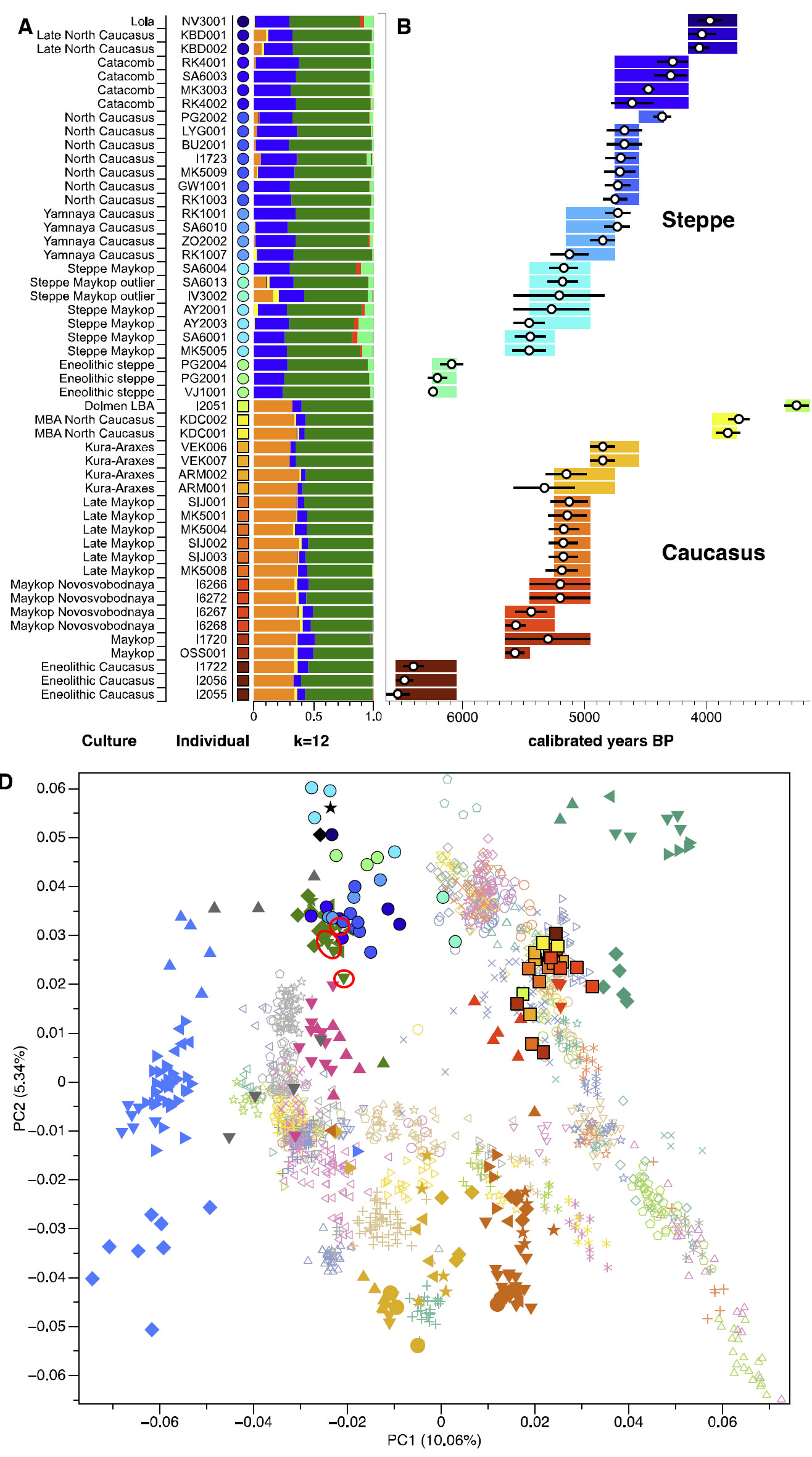
Yamna Hungary, and the previous Yamna “outliers”
Those western “Yamna outliers”, as I expected, were part of some late Khvalynsk/early Yamna groups that cluster “to the south” of eastern Yamna samples:
Another important observation is that all later individuals in the steppe region, starting with Yamnaya, deviate from the EHG-CHG admixture cline towards European populations in the West. This documents that these individuals had received Anatolian farmer-related ancestry, as documented by quantitative tests and recently also shown for two Yamnaya individuals from Ukraine (Ozera) and one from Bulgaria24. For the North Caucasus region, this genetic contribution could have occurred through immediate contact with groups in the Caucasus or further south. An alternative source, explaining the increase in WHG-related ancestry, would be contact with contemporaneous Chalcolithic/EBA farming groups at the western periphery of the Yamnaya culture distribution area, such as Globular Amphora and Tripolye (Cucuteni–Trypillia) individuals from Ukraine, which also have been shown to carry Anatolian Neolithic farmer-derived ancestry24.
On the other hand, it is interesting that – although no information is released about these samples – Yamna Bulgaria is now a clear outlier, among very “Yamnaya”-like Yamna settlers from Hungary, most likely from the Carpathian basin, and new Yamna LCA/EBA samples, possibly from Late Yamna (see them also marked in the PCA above):
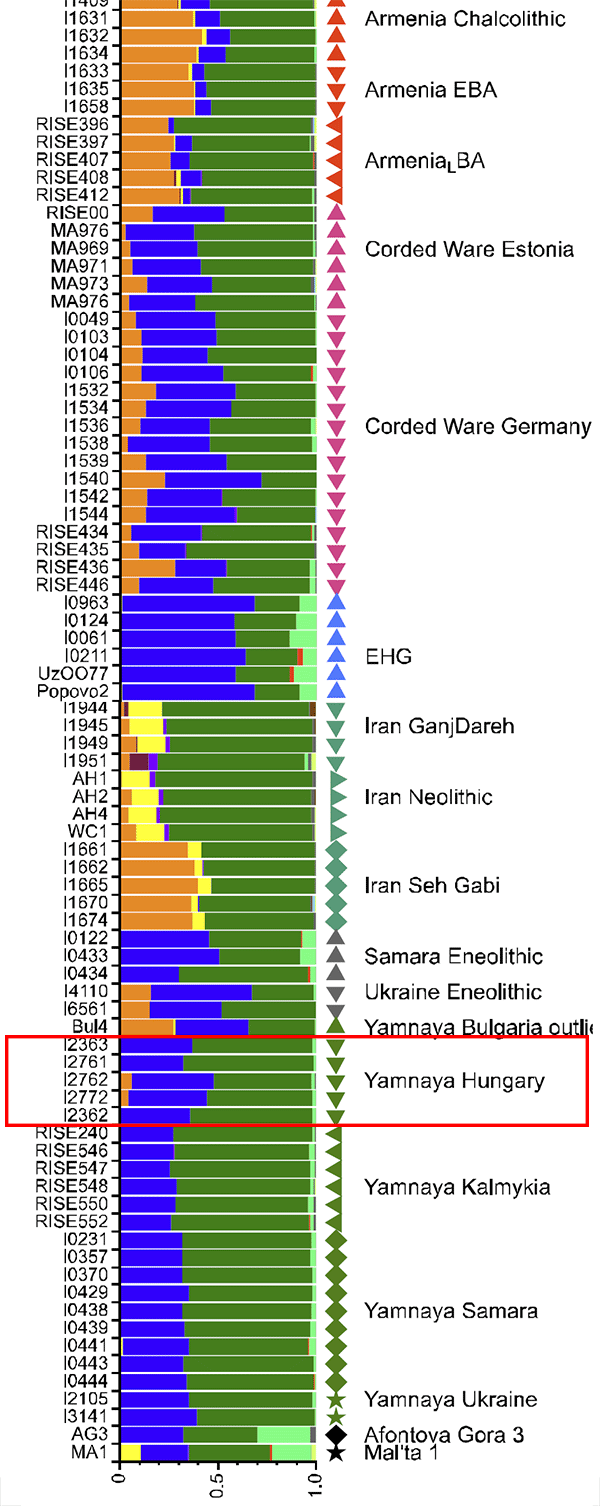
The important admixture of Yamna settlers with native populations, seen in expanding East Bell Beakers of R1b-L23 lineages from ca. 2500 BC on, must have therefore happened at the same time as the adoption of the proto-Bell Beaker package, i.e. precisely during the Carpathian Basin / Lower Danube settlements, and not in West Yamna.
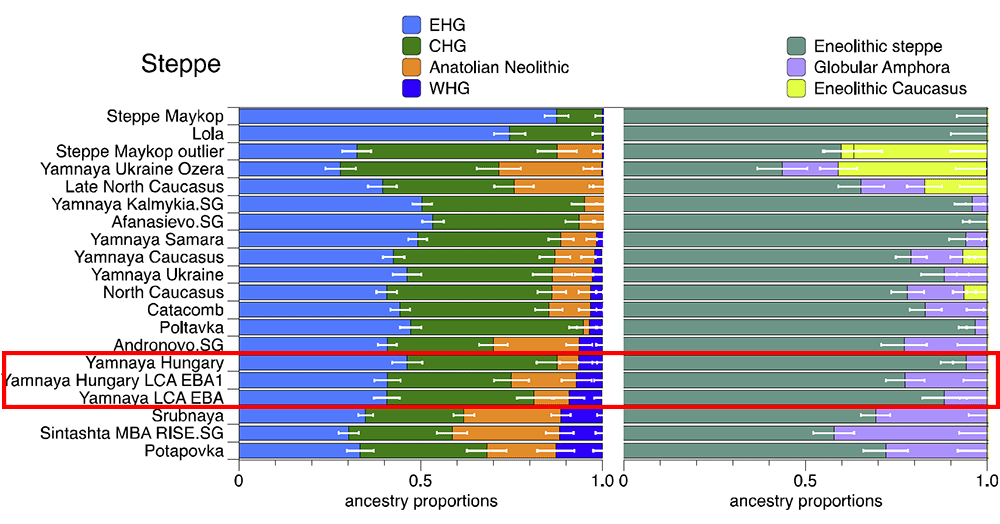
So, it can’t get clearer that Late Neolithic Baltic and Corded Ware migrants, sharing R1a-Z645 lineages and a different admixture, related to Eneolithic North Pontic groups such as Sredni Stog (see above ADMIXTURE graphics of CWC and Eneolithic Ukraine samples), did not come from West Yamna migrants, either.
So much for the R1a/R1b Yamna community that expanded Late PIE into Corded Ware.
NOTE. Andrew Gelman has coined a term for a curious phenomenon (taken from an anonymous commenter): “Eureka bias”, which refers not only to how researchers stick to previously reported incorrect results or interpretations, but also to how badly they react to criticism, even if they understand that it is well-founded. Directly applicable to the research groups that launched the Yamna-CWC idea (and the people who followed them) based on the fallacious “Yamnaya ancestry” concept, and who are still rooting for some version of it, from now on with exogamy, patron-client relationships, Eneolithic Indo-Slavonic, and whatnot. Unless, that is, Anthony’s latest model is right, and Yamna Hungary is suddenly full of R1a-Z645 samples…
Images used are from the article.
Related:
- Consequences of Damgaard et al. 2018 (III): Proto-Finno-Ugric & Proto-Indo-Iranian in the North Caspian region
- Consequences of Damgaard et al. 2018 (I): EHG ancestry in Maykop samples, and the potential Anatolian expansion routes
- Consequences of Damgaard et al. 2018 (II): The late Khvalynsk migration waves with R1b-L23 lineages
- No large-scale steppe migration into Anatolia; early Yamna migrations and MLBA brought LPIE dialects in Asia
- Early Indo-Iranian formed mainly by R1b-Z2103 and R1a-Z93, Corded Ware out of Late PIE-speaking migrations
- Y-DNA haplogroup R1b-Z2103 in Proto-Indo-Iranians?
- North Pontic steppe Eneolithic cultures, and an alternative Indo-Slavonic model
- The concept of “Outlier” in Human Ancestry (III): Late Neolithic samples from the Baltic region and origins of the Corded Ware culture
- New Ukraine Eneolithic sample from late Sredni Stog, near homeland of the Corded Ware culture
- The renewed ‘Kurgan model’ of Kristian Kristiansen and the Danish school: “The Indo-European Corded Ware Theory”